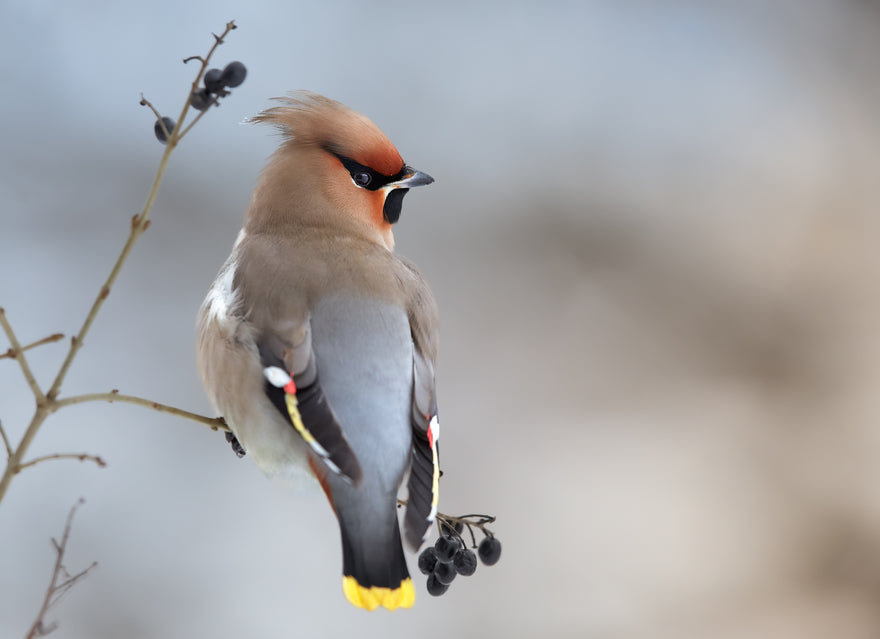October 05, 2017

Seven Endearing Facts about Waxwings
It’s always a great joy to get up close to these plump and unbelievably striking birds, as they can be quite oblivious when consuming bountiful crops of berries. Many flock to Orkney during the winter months and they certainly enrich our dark winter days.
Waxwings are unmistakable, given the combination of plumage, colour and wonderful crest. Similar in size to the common starling, waxwings grow up to around 21cm, but tend to look chubbier! Males and females are very similar, with the female’s black bib having a less defined lower edge then the male.
1 Appearance
These gorgeous birds have such rich and exotic markings and are velvety peach-beige in colour with a contrasting black mask and bib. The tail is tipped with yellow and the wings are edged with prominent yellow tips along the length of the primaries and white at the base of the primary converts. Secondary wing feathers have prominent red waxy “fingers”.
2 Location
Waxwings only visit the UK during the winter months (October to March) and spend their breeding season in the boreal forest belt, covering parts of Scandinavia, Russia and across parts of North America. The number visiting the UK is largely dependent on the success of their breeding season, weather conditions and the availably of rowan berries on the Continent. A poor berry season will see as many as 12,000 arriving to eastern and northern parts of the UK in search of food.
3 Feeding Habits
Waxwings love berries! They are not shy either and will often feed in close proximity to humans, which is great if you want to test your photography skills. Rowan, holly, cotoneaster and hawthorne are particular favourites but they will also feed on available fruit such as apples. In the winter months, they will typically eat around 800-1000 berries a day, roughly twice their body weight. Hanging cut apples from tree branches, or on tall canes are great ways to encourage waxwings into your garden.
4 What’s in a Name?
There are only three species of waxwing; Bohemian, Cedar and Japanese. Waxwings get their name from the long glossy red tips on the feather shafts in the middle of their wings which looks like the sealing wax used on old letters and envelopes.
5 Call / Song
The waxwing has a soft extended trill, repeated several times to provoke responses from other birds within the flock.
6 Did You Know?
A group of waxwings is collectively known as an "ear-full" or a "museum" of waxwings.
7 Where to find us
Waxwings are fairly easy to spot in sheltered gardens, orchards, parks, even public places such as; supermarkets, schools and leisure centres, generally anywhere with berry-laden plants. Happy waxwing spotting!

Orkney Storehouse – Waxwing Range
Our endearing Waxwing collection beautifully illustrates the bird’s rich and exotic markings, against clusters of bright red berries. An adorable and heart-warming collection, across our range of fine bone china and homeware products. You can view the full waxwing range here https://orkneystorehouse.com/collections/waxwing
July 17, 2018
April 23, 2018
Sign up to get the latest on sales, new releases and more …
